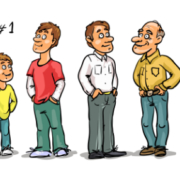Why Construction Workers Need Chiropractic
Every day construction workers lift, stoop, bend, reach, push, pull, twist, and climb. It’s no wonder that 25% of construction worker injuries are to the back. An estimated 1 in every 100 construction workers misses work because of a back injury with an average of seven missed work days. Many just power through the pain which isn’t healthy and can lead to further injury and pain. Repeated back injury and failure to take care of the back by taking proactive steps to prevent injury, can lead to permanent damage, even disability. That can end a construction worker’s career.
Chiropractic care can help keep the spine healthy so construction workers can stay on the job and be pain free. Regular treatment can offset the stress that is put on the body each day in this rigorous, physically demanding profession. There are several benefits that a construction worker can gain from seeing a chiropractor on a regular basis.
It helps to maintain mobility
When muscles are stiff and sore, it is natural to try to avoid moving too much. When a person has pulled muscles or they have muscle strain, their first instinct is to protect that area. This can lead to stiffness and lack of mobility, especially if the pain is in the back. A painful lower back can make it difficult to move your legs, bend, or even move about normally. Chiropractic helps to relieve the pain and reduce the stiffness so that mobility is restored.
Range of motion is improved
Stiffness can lead to a limited range of motion. If the spine is out of alignment, it can decrease flexibility and significantly limit the joint’s range of motion, whether it’s the back, shoulders, legs, or neck. Chiropractic brings the spine into the correct alignment which improves range of motion.
Chiropractic helps to relieve back pain
Studies show that chiropractic is very effective in relieving back pain. It can significantly decrease the pain, but in most cases it completely alleviates it.
In one study, 73% of the participants reported an improvement in their back pain. This means fewer missed days of work and much more productive on the job. This is one of the most common reasons that people seek chiropractic care, but it isn’t the only reason. It can help with so much more.
Corrects muscle imbalance
Workers who perform repetitive motions can experience muscular imbalance. This means that some muscles are tight (the ones being used) and others are not being worked as hard. It can cause pain in the area of the muscle as well as in other parts of the body.
A chiropractor can perform a technique called myofascial release to loosen the tight muscles. At the same time, they will recommend exercises for the muscles that don’t get worked as often so that the body can come back into balance. Muscular imbalance can also cause spinal misalignment so the chiropractor will also do an adjustment to bring the whole body back into balance.
Helps the body heal from injuries
Construction injuries are fairly common on a worksite. Most are fairly minor and tend to be ignored by the person until they are in so much pain they can’t function properly. Back strain is a common ailment among construction workers and it can put someone out of commission for a week or more.
Chiropractic care helps the body heal faster and more efficiently by focusing on the whole body instead of just the part that hurts. The patient receives the treatments at the chiropractor’s office then goes home with advice on lifestyle changes, supplements, and exercises to facilitate and speed healing.
For anyone in the construction industry, especially if their position is physically demanding, regular chiropractic care just makes sense. It keeps the spine healthy and the body moving as it should. It is a simple, natural, effective way to help the body function correctly – because pain is not normal.
Visit www.ocwc.ca for more health and wellness tips and information.










